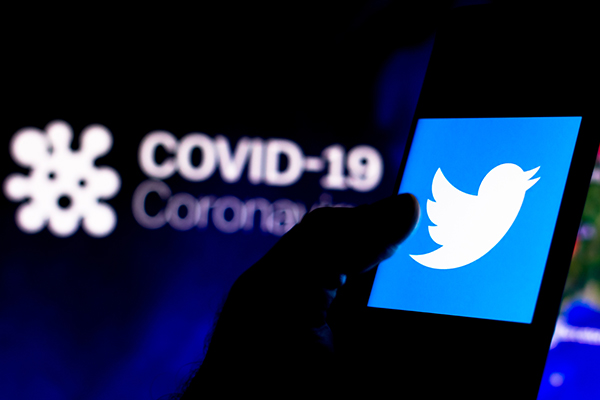Communicating in a Crisis
UCI professor receives National Science Foundation grant to develop social media messaging guidance for agencies to warn, inform and engage the public during an emergency

A UCI professor is developing social media messaging guidance for health and emergency management agencies to warn, inform and engage the public during an emergency.
May 29, 2020 - Getting information out to the public during a crisis – like the COVID-19 pandemic – is critical for community health and safety, and Twitter, with its small character count and more than 330 million user base, has become the go-to platform for public officials to keep their constituents in the know. Understanding how to craft the most effective messages for maximum reach can be a difficult moving target, says UCI sociologist and social network expert Carter Butts. With a newly awarded Rapid Response Research grant from the National Science Foundation, he wants to help.
“In the context of COVID-19, public health and emergency management entities – as well as elected officials such as mayors and governors - are on the front lines, informing and educating the public about what they should be doing for prevention,” says Butts, who has a joint appointment as professor of electrical engineering and computer science and is also a researcher with the California Institute for Telecommunications and Information Technology (CALIT2). “This mission requires them to communicate directly and effectively with the public, often with little time to prepare and little vetting. In an extremely crowded media – and rapidly changing messaging – environment, this is a real challenge.”
Butts knows this environment well; he’s spent the better part of his nearly 20-year academic career studying communication in times of crisis including everything from non-medical hazards – tornadoes, wild fires, floods – to emerging infectious diseases such as zika and Ebola. Working with Jeannette Sutton, director of the University of Kentucky’s Risk & Disaster Communication Center, he’s found content, style and structure to be the critical elements in effective messaging, and the right mix changes based on the event.
“It’s not a one-size fits all situation,” he says. “Different kinds of crises pose different challenges, and the communicator is often having to think quickly, working on the spot to pack the right message into a small space.”
COVID-19 represents a particularly distinctive risk profile, says Butts. Early communication had to establish threat severity and prevention guidelines for social distancing – a completely new concept for the public – simultaneously. The virus’s impact on every facet of life, from individual health to the economy to national security, has made messaging about it all the more important to get right.
“Going into a disaster, you don’t really know what type of information may be most critical,” he says. “To study it, you have to look at what’s going on in the communication landscape and understand the key themes and topics that turn out to be important for people to be able to take action.”
Butts and Sutton are getting to work applying what they’ve learned from past disasters to the COVID-19 pandemic. The project relies on a massive computerized data collection effort to capture and code all tweets posted by targeted agencies 24-hours a day, 7 days a week. The data will then be used to develop models that can predict message outcomes – whether or not something will go viral or engage audiences - based on content, style, and structure.
“The goal is to develop an evidence base for guiding public agencies to engage with the public in this and future pandemics,” he says.
“As a social scientist, I try to help solve problems that enable our society to function, diseases to be cured, and our economy to keep running. Our work gives us the chance to inform interventions that save lives, and that’s incredibly empowering at a time when we’re all feeling the strain of the pandemic.”
Funding for the work began in May and runs through April 2021.
- Heather Ashbach, UCI Social Sciences
